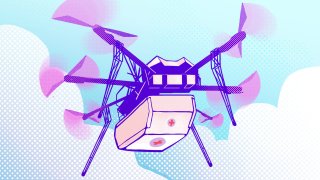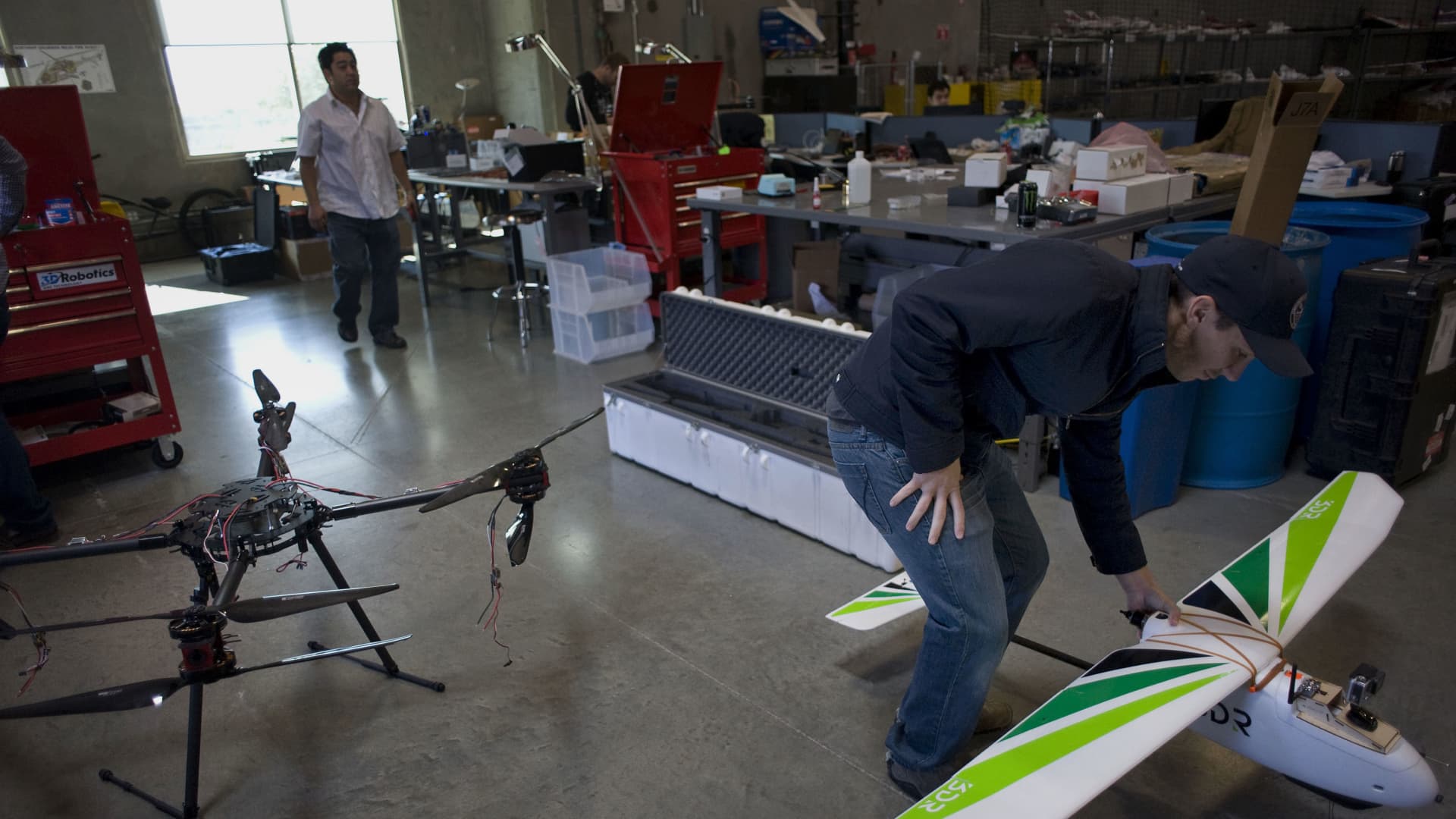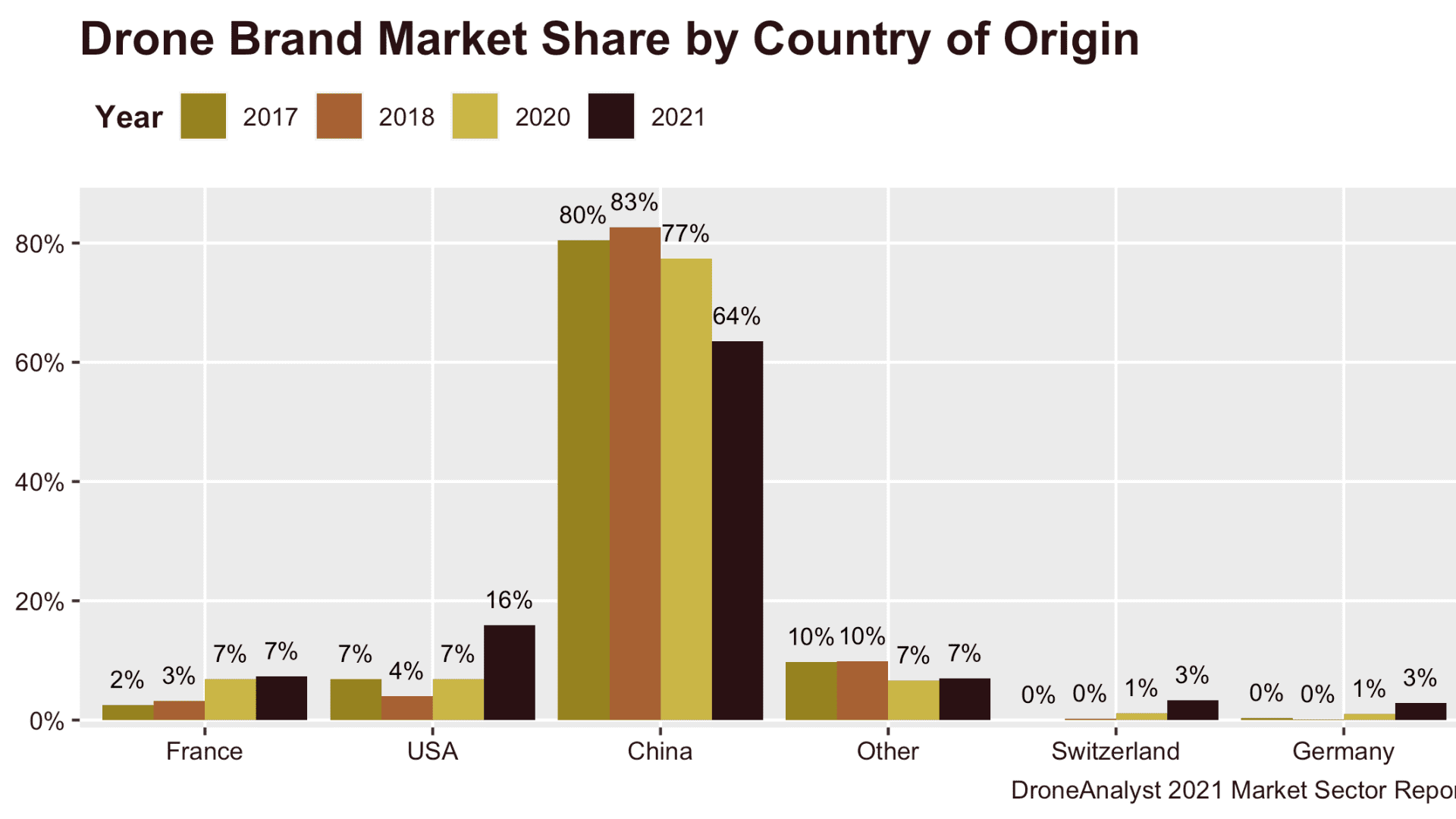
- 3D Robotics was among the first big drone companies out of Silicon Valley, but it struggled to compete with the manufacturing and supply chain expertise of Chinese drone giant DJI, especially for the lower-price consumer market.
- The slow pace of regulatory change from the FAA was out of sync with the pace of innovation in technology, and that remains the primary issue for autonomous flight today.
- Now with Larry Page-funded autonomous air mobility company Kittyhawk, Anderson says the regulation will ultimately evolve, and the transportation sector opportunity for autonomous aircraft be much larger in scale than the commercial drone industry he once saw as the biggest prize.

In this weekly series, CNBC takes a look at companies that made the inaugural Disruptor 50 list, 10 years later.
For Chris Anderson, co-founding one of the first notable drone companies in the U.S., 3D Robotics, didn't start with the grand vision of a billion-dollar market payday, but simply a community of drone enthusiasts in 2007 who imagined empty skies filled up with autonomous innovation.
We're making it easier for you to find stories that matter with our new newsletter — The 4Front. Sign up here and get news that is important for you to your inbox.
"We started as an open-source community," Anderson recalls today. "It was the dawn of the iPhone release and the maker movement and unbridled enthusiasm in Silicon Valley for a pace of innovation that could touch every industry."
Aviation was, and remains, a big opportunity. The thesis: the one-to-one aircraft-to-pilot model is ripe to be disrupted.
The drone software community morphed into a company, and the company into a business model that planned to provide a market set to boom with the hardware it needed, but the drone market didn't grow in ways which allowed 3D Robotics – a member of the inaugural CNBC Disruptor 50 list in 2013 – to thrive, or even ultimately survive.
Money Report
Fear of flying?
The anticipated rise in flight automation that would reveal new use cases, and give rise to new markets, couldn't overcome a major headwind: regulation. The permissions the drone industry needs to fly beyond the line of sight, to fly at night, over people, and to break the 1-to-1 ratio, all at scale rather than in a test phase, still haven't been realized more than a decade later, though there have been approvals in recent years to fly beyond the line of visual sight, including for Amazon Prime, UPS, and Alphabet drones.
Says Anderson, who knows as much about the FAA process for drones as anyone, it could still take years for the FAA to get comfortable with the safety profile, and that means the pace of innovation that Silicon Valley is accustomed to working from will remain second to the pace of regulatory review from Washington. "The fact that the sky is empty is still an FAA issue," he said. "Anyone in aerospace would have probably said, 'of course, it would take this long, that's how it works,' but we were technologists and were a little naive. It works at Washington time, not Valley time."
"We thought once it was not just a toy but demonstrated more use cases there would be higher prices too, the sandbox would grow. And that day has not yet come," Anderson said.
Instead, 3D Robotics was forced into a make-or-break play for the consumer drone market, largely taking pictures and videos. "Which was never our strength," Anderson says, but played directly into the strength of the leaders in the consumer electronic market, namely Chinese companies, and most notably DJI, which today has somewhere between 90% and 100% of the consumer drone manufacturing market.
"We had super-advanced drones really optimized for robotics and they had a simple drone with a fantastic camera and that's what consumers wanted, and it was cheaper. The drones didn't do much but what they did was just so good," he said.
A partnership with GoPro designed to exploit a higher-end consumer opportunity became an engineering challenge and, from a market perspective, the GoPro brand didn't materialize into the differentiating factor allowing 3DR to charge the premium it needed. In fact, within a nine-month span as it was launching its Solo drone, prices for high-end drones went down from over $1,500 to $500-$600.
"It was a race to the bottom," Anderson says, and one in which the Chinese supply chain had an unbeatable advantage.
Today, there is one major commercial drone success story: autonomous crop-spraying in China, which is a big industry. China's crop spraying market has accelerated so quickly, partially due to the fact that the Chinese government has subsidized the use and purchase for farmers, that it is broken out as its own vertical in market analysis by DroneAnalyst. DJI and Chinese rival XAG are "neck and neck" in the commercial market, according to its data, and the concept is starting to expand globally, primarily in Southeast Asia.
The domestic commercial drone market is growing, too, as is drone manufacturing in the U.S., up to 16% of commercial hardware, according to DroneAnalyst. "We've seen a lot of new U.S. hardware start-ups gain some market share," said David Benowitz of industry research firm.
Its research shows U.S. companies making drone hardware rose from 7% of the market in 2017-2018 to 16% in 2021. While on the consumer side and the attempt to compete with DJI, "Everyone has given up," Benowitz said. "DJI owns the market, but they don't operate in that many categories," he added.

This provides opportunity for new hardware entrants, but he doesn't think the hardware opportunity alone will ever develop in a market juggernaut. "It's not a booming businesses, growing, but we're not seeing the next Airbnb or Uber happening in US. drone hardware."
There may be further growth as U.S. businesses and government seek to diversify drone sourcing, Benowitz said, but, "It's quite small still, and early days, and I don't think a key part driving the market."
Commercial drone opportunities are growing
There are growing business models exploiting various niches, from Skydio – the most recent drone unicorn, and first in a while – focusing on cell towers; to multiple-time Disruptor Zipline and medical deliveries in emerging markets, a model that may yet develop into a broader global strategy. But more than a decade after the early days of the drone industry these verticals remain in the early stages of development.
Walmart and Amazon are evolving efforts in last-mile delivery and drone investment, Alphabet has its Wing business, but nothing is yet at scale today which solves all of the problems across rural, suburban and urban environments.
Anderson thinks the commercial drone players may still have brighter futures than 3DR, but those verticals remain in early stages of development and Anderson's enthusiasm for agriculture as a huge market for drones, a belief he held earlier in his career, is a bet he is less certain about now.
"I was sure the answer was agriculture, it's so obvious we don't have a fine-grained understanding of what's going on in crops," he said. "I've always thought of it as a higher resolution satellite. If you can pop a cam in the air anywhere, anytime, and get sub-millimeter resolution, these would be 100 times better than satellites."
But so far, it has turned out that the data surveying made possible by drones hasn't been that useful in the field even as the crop-spraying drones in China boom. "The data thing is not useful in the U.S. It was the wrong model and only learnable because we spent years trying it and it didn't work out so well," Anderson said. "We need to get opportunities to try things in the real world to figure out which are the big ones," he added.
Commercial customers like utilities move slowly, but the true test for drones on the commercial side will be when there is an internet-of-things system that combines both on-the-ground robots like Boston Dynamic's Spot, already used by utilities, with aerial drones, according to Benowitz. "The future is more integration with other industrial robots," he says. "We are seeing companies start to think about drones as just another robot in the fleet. ... Spot is really good for mapping indoor areas and drones so much better outside."
Air mobility an even bigger opportunity
Anderson, meanwhile, has set his sights on a new opportunity. A big part of 3D Robotics was sold to Kittyhawk, the Larry Page-funded autonomous air mobility start-up where Anderson now serves as chief operating officer, alongside CEO Sebastian Thrun, a former Google engineer who was among the founders of online education company Udacity, a former Disruptor company too.
Kittyhawk has just gone through its own business pivot, more in line with Anderson's dream of autonomous aviation, changing from a focus on a pilot-led model in air mobility to a remote model.
"The unit economics of flying without a pilot are so much better," Anderson said. "That's one more seat."
Drones are primarily a data industry, which is much smaller than the transportation sector, and opportunity for air mobility. And the idea of a remotely piloted network, with one operator spread across many vehicles looks exactly like the drone model that Anderson has long wanted to build. "I am a drone guy, and this was the perfect, obvious next chapter, just bigger drones and the use case is so much more obvious, moving people from A to B more quickly and as cheaply as a car is the kind of mission I can get behind."
The market already has seen the introduction of the first publicly traded air mobility company, Joby Aviation. Electric aircraft are simpler mechanically, and cheaper, and the autonomy takes the cost of pilots out of the equation too.
"On the tech side, there is no reason we can't move a significant fraction of people off the roads and into the sky," Anderson said.
Kittyhawk is targeting 10% of current road miles in cities.
Benowitz says the acquisition of 3D Robotics talent, especially Anderson himself, makes sense, as he brings deep connections and knowledge from the drone world to the new effort. But the advanced air mobility idea remains an unproven economic model. "It's still super-early to think it is a viable business model," he said. "It very well may work, but everyone also thought we would be using helicopters every day like we use airplanes, so it will take a while to leapfrog," he said.
Kittyhawk is well-funded, according to Anderson, who declined to talk about any specific timeline to the public market. He doesn't seem worried about helicopters: "We don't have helicopters landing everywhere because they are annoying and noisy and dangerous."
China already is in the air mobility market, as it had been in drones from the beginning. Chinese autonomous air mobility company EHang is already doing tourist flights that Anderson describes as "very impressive" from a technology and safety perspective, but in this case, the regulation makes the competitive threat non-existent compared to DJI, which for other reasons remains highly scrutinized by the U.S. government. Commercial autonomous air mobility will evolve on a nation-by-nation certification basis, and unlike DJI drones taking over consumer markets around the world, EHang won't be certified in the U.S. easily.
"I am convinced it's a time of revolution in aviation, and I was convinced ten years ago at a smaller scale," Anderson said. "Now we can see that the same thesis applies at a bigger scale. We still have the regulatory challenges ahead of us."
The difference this time? "I'm going into this one with eyes wide open this time," Anderson says.
Kittyhawk works with a former FAA head and Anderson was on the phone with the FAA on the morning of our conversation. "The FAA has learned a lot and it will be a long road, but it is going to happen," he added.
CNBC is now accepting nominations for the 2022 Disruptor 50 list, our annual look at private innovators using breakthrough technology to transform industries and become the next generation of great public companies. Submit your nomination by Friday, Feb. 4, at 3 pm Eastern time.






